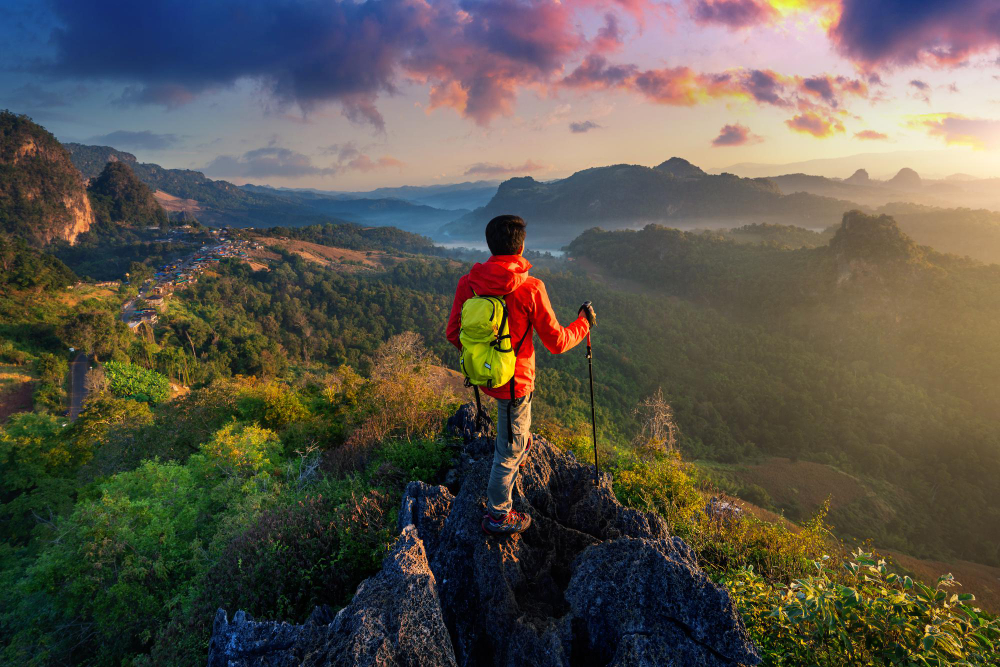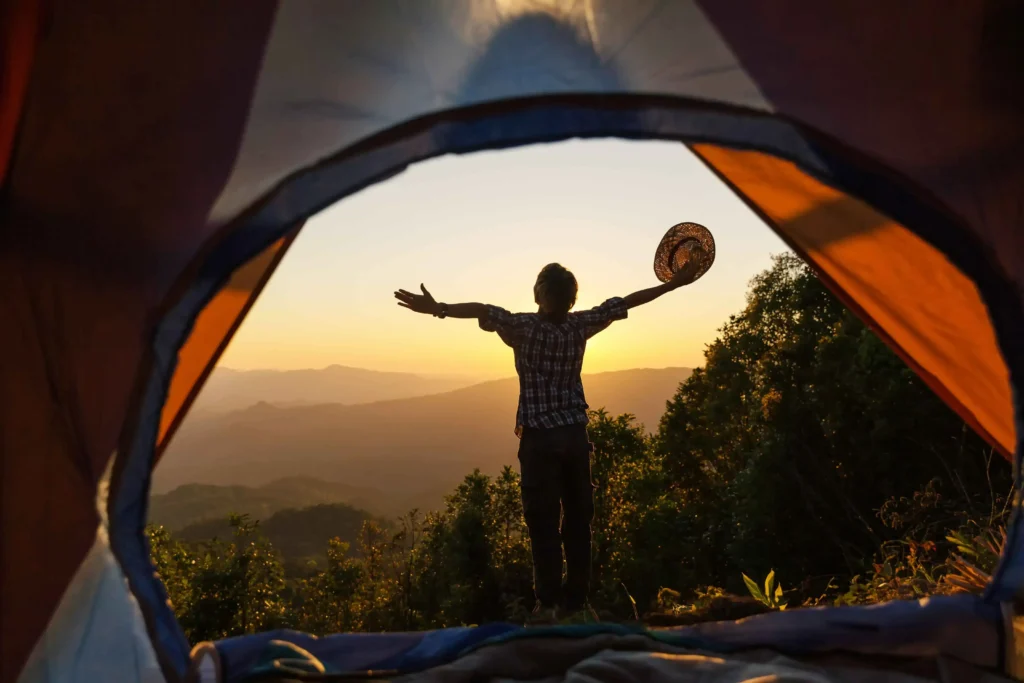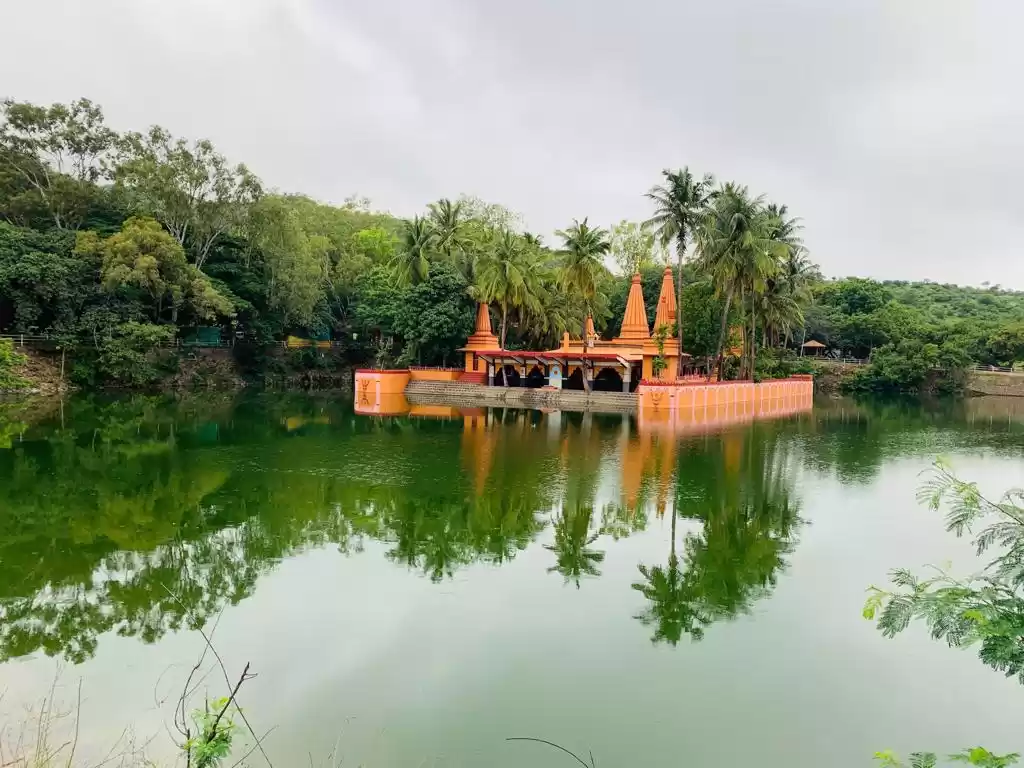- Quick Facts
- Why Panshet Works So Well for a One-Day Trip
- Water Sports at Panshet: What to Expect (and How to Choose)
- Panshet Dam: A Brief History (and the 1961 Breach)
- Routes: How to Go to Panshet Dam from Pune
- Panshet Dam One Day Trip: A Ready-to-Use Plan
- Where to stay: Choose from Hotels in Panshet Dam, Panshet Dam Resort, or resorts nearby.
- Food & Facilities
- Photography & Best Time
- Responsible Travel & Safety
- Final Word
- FAQs (The Questions Everyone Asks)
If you’re hunting for an easy, scenic escape from the city—one with placid waters, Sahyadri hills, and a dash of adventure—Panshet Dam (also known as Tanajisagar Dam) is the quick getaway that keeps on giving. Hugging the backwaters of the Ambi River, this lakeside retreat sits about 45–50 km southwest of Pune and blends lazy-lake vibes with water sports, camping, and sunset views that glow like brass.
Quick Facts
- Where is Panshet Dam? Set in the Sahyadri ranges, southwest of Pune near Panshet village (Velhe taluka), the dam spans the Ambi River. Also called Tanajisagar Dam.
- Panshet Dam distance from Pune: ~45–50 km by road, typically 1.5–2 hours depending on traffic and your starting point.
- Best for: Boating, kayaking, lakeside picnics, short treks/fort detours (Sinhagad), camping, and relaxed one-day trips.
Why Panshet Works So Well for a One-Day Trip
1) Effortless Lakeside Scenery
Panshet’s backwaters spread like a mirror between rolling Sahyadri folds. The ride itself—via Khadakwasla and village roads—feels like a slow exhale after the city’s buzz. Once there, the shoreline is dotted with calm nooks perfect for an hour of doing nothing or clicking those glassy-lake reflections just before sunset.
2) Water Sports Without the Chaos
Unlike crowded tourist spots, boating and kayaking at Panshet Dam offer a calm and unhurried experience. Operators typically offer pedal boats, rowboats, motorboats, and kayaks; some camps add fun rides seasonally. Expect organized life jackets and basic safety briefings before you head out. (Exact options depend on water levels and the operator’s permits on the day.)
3) Camping & Stargazing
Panshet dam camping is popular because city lights fade fast out here. Choose a lakeside campsite for tents, barbecue dinners, and a bonfire—then wake to saffron light on still water. Camps vary in facilities: some are rustic (BYO sleeping bag), others offer fixed tents, meals, and packaged activities. Book ahead on weekends/holidays.
Water Sports at Panshet: What to Expect (and How to Choose)
- Pedal Boats & Rowboats (Beginner-Friendly): Great for families and first-timers. Calm waters mean easy navigation and photo ops near the shore.
- Kayaking (Beginner to Intermediate): Early mornings are best—glassier water, soft light, fewer boats. Wear the jacket; keep phones in a dry pouch.
- Motorboat Rides (All Levels): Short scenic spins across the backwaters for those who want views without paddling.
- Seasonal Add-Ons: Some operators introduce fun rides during peak season. Always check current availability and safety practices before paying.
Safety tips: Avoid alcohol before entering the water, follow operator instructions, and skip water activities in heavy rain or low-visibility conditions. (Local authorities sometimes revise rules seasonally for safety across Pune’s lakes.)
Panshet Dam: A Brief History (and the 1961 Breach)
Commissioned in the late 1950s along with neighboring reservoirs to augment Pune’s water supply, Panshet Dam suffered a catastrophic breach on 12 July 1961, during its first year of storage. Investigations highlighted a critical failure linked to the conduit through the earthen embankment—built without reinforced cement concrete—triggering major floods downstream in Pune.
The incident reshaped dam-safety thinking locally and remains a sobering historical footnote when people mention the Panshet Dam burst or Panshet Dam break. Today’s structure and operations follow modernized standards and routine oversight.
Routes: How to Go to Panshet Dam from Pune
By Car/Bike (Most Flexible)
- Classic route:
Pune City
│
├─ Khadakwasla (lake & food stalls)
│
├─ Donje / Sinhagad junction
│
├─ Khanapur
│
└─ Panshet Dam (Tanajisagar Lake)
- Expect ~1.5–2 hours each way with breaks. Roads are generally good; last stretches are narrower but scenic. Start early for soft light and quieter water.
How to Reach Panshet Dam from Pune by Bus
PMPML and regional buses run towards the Panshet belt. Typical patterns include services from Pune Station / Natraj Stand to stops like Khanapur / Gorhe Khurd, from where autos or shared jeeps can take you the last miles to the dam. Look for bus numbers in the 52-series (52/52A/52B/52C/52D) on route planners; schedules vary by day and season, so check live timings before you go.
Pro tip: On weekends/holidays, PMPML sometimes announces tourist specials around the lake circuit (Khadakwasla–Panshet–Varasgaon). Keep an eye on local updates if you prefer a direct, tourist-oriented bus.
Panshet Dam One Day Trip: A Ready-to-Use Plan
6:30–7:00 AM: Leave Pune. Breakfast stop at Khadakwasla (simple local snacks, tea).
8:30 AM: Reach Panshet. Stroll the shore, click the morning reflections.
9:00–10:30 AM: Panshet dam boating/kayaking (early slots = calmer water, better photos).
11:00 AM: Optional short walk on lakeside trails; relax under trees.
12:30 PM: Lunch at a basic local eatery (veg thali/misal / bhakri-zunka) or a pre-booked campsite meal.
2:30 PM: Drive back via Sinhagad Road; detour to Sinhagad Fort (if energy permits) for views and curd/kandha-bhaji.
6:00–6:30 PM: Sunset by Khadakwasla backwaters; return to Pune.
Where to stay: Choose from Hotels in Panshet Dam, Panshet Dam Resort, or resorts nearby.
You won’t find a dense hotel strip right on the dam wall (it’s a protected water source), but the “greater Panshet” belt—Khanapur, Gorhe Khurd, the Panshet–Varasgaon road, and onward toward Mulshi—offers stays that fit different moods and budgets:
- Lakeside Camps (Closest Feel): Tented stays with dinner/bonfire and panshet dam camping activities (kayak/boating as add-ons). Rustic charm; check inclusions—washrooms, electricity, and safety gear.
- Homestays & Farmstays (Within 5–15 km): Simple rooms, local meals, big verandas, and starry skies. Great if you want quiet plus morning walks.
- Resort-Style Escapes (Wider Radius): Search for panshet dam resort or resorts near panshet dam; you’ll find properties spread along the lake circuit and further toward Mulshi with pools, lawns, and spa options. Book weekends ahead.
Booking tip: Verify boating or activity access in advance—some properties partner with licenced operators; others simply point you to public jetties.
Food & Facilities
Expect basic local eateries along the way (tea, bhaji, misal, thali). Pack drinking water and snacks, especially if you plan to linger by quieter shores. ATMs/fuel are available on the city side and at larger junctions (Khadakwasla/Sinhagad Road), but less so deeper near the lake.
Photography & Best Time
- Golden hours (7–9 AM and 4:30–6:30 PM) deliver the prettiest frames—light skimming the water, rippling hills, and boats carving gentle leads.
- Seasonality: Post-monsoon to winter (Sept–Feb) is gorgeous—lush hills, full backwaters, clearer skies. Summers are hotter and harsher mid-day, though mornings still work.
Responsible Travel & Safety
- Stick to designated boating points; wear life jackets; avoid risky edges where the ground drops sharply into the water.
- Monsoon cloudbursts can change water levels fast—respect local advisories and operator guidance. (Authorities across Pune’s lakes intermittently tighten safety protocols.)
- Carry back all trash. This lake system is part of Pune’s vital water network.
Final Word
Panshet Dam, Maharashtra, isn’t about ticking boxes—it’s about slowing down: paddling into mirror-calm water, listening to hill breezes, and sharing a hot bhaji by the shore. Whether you come for panshet dam boating, a cosy panshet dam camping night, or a relaxed panshet dam one day trip, you’ll leave with the kind of stillness that city weekends rarely grant.
If you’d like, I can tailor this into a printable itinerary with a packing list, a bus-timings cheat sheet, and a curated map pin set for viewpoints, boating jetties, and safe photo stops.
FAQs (The Questions Everyone Asks)
Q: Where is Panshet Dam?
Ans: In the Sahyadri foothills southwest of Pune, near Panshet village, it dams the Ambi River and is also called Tanajisagar Dam.
Q: What’s the panshet dam distance / panshet dam distance from Pune?
Ans: Roughly 45–50 km; plan 1.5–2 hours depending on where you start in the city and traffic.
Q: Is Panshet dam boating available?
Ans: Yes—pedal boats, rowboats, kayaks, and motorboat rides are commonly offered by licenced operators and camps, subject to water levels and permits on the day.
Q: How to go to Panshet Dam from Pune?
Ans: By road via Khadakwasla → Donje → Khanapur → Panshet is the most straightforward and scenic route. Start early for better light and smoother traffic.
Q: What about the Panshet dam burst / panshet dam break I’ve heard of?
Ans: In 1961, during its first storage cycle, the dam suffered a breach linked to the non-RCC conduit through the earthen embankment, causing severe flooding in Pune. It’s a historic event; dam safety practices have evolved significantly since.
Q: Can I plan a panshet dam one day trip?
Ans: Absolutely. Morning drive, a boating/kayaking session, lakeside lunch, optional Sinhagad detour, and a Khadakwasla sunset make a perfect loop.
Q: Are there hotels in Panshet Dam or a Panshet Dam resort?
Ans: Expect camps, homestays, and resorts near Panshet Dam rather than right on the dam itself. Book early for weekends; confirm activity access if that’s a priority.



